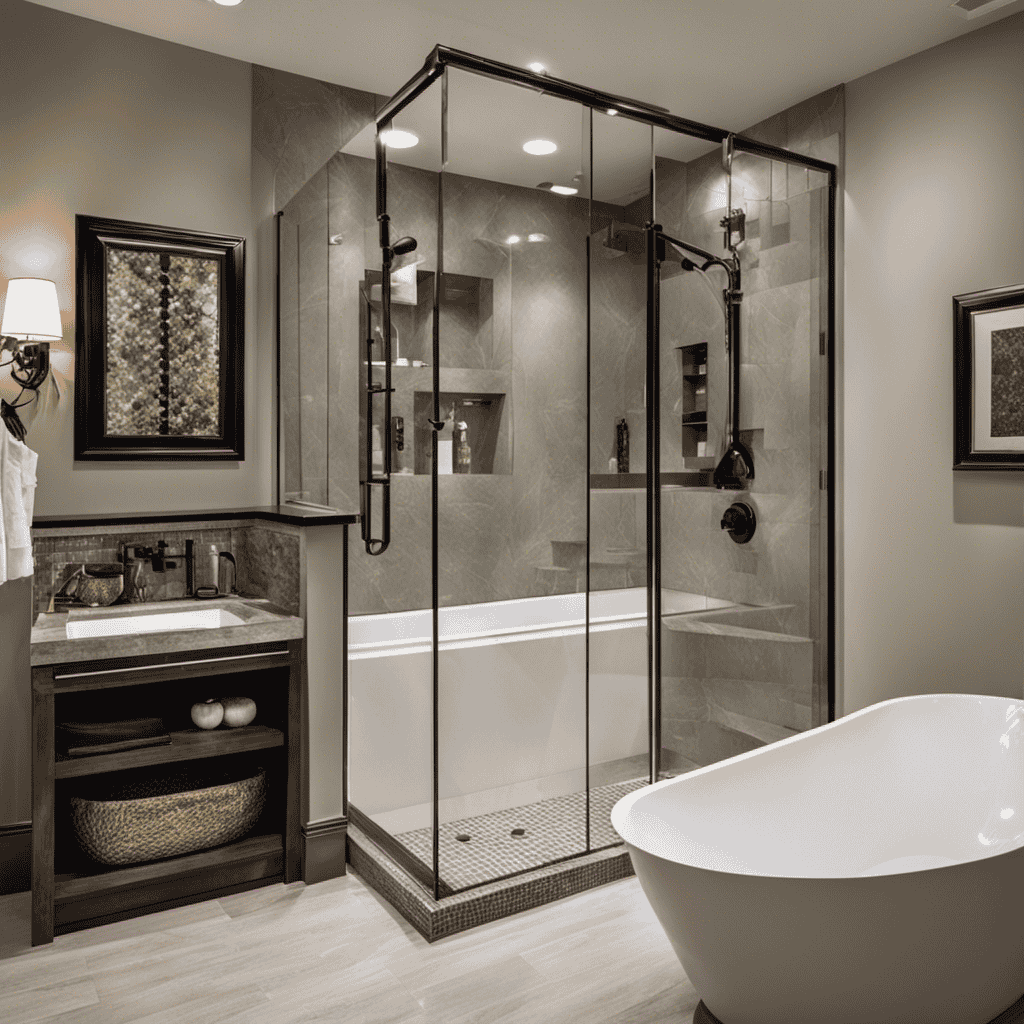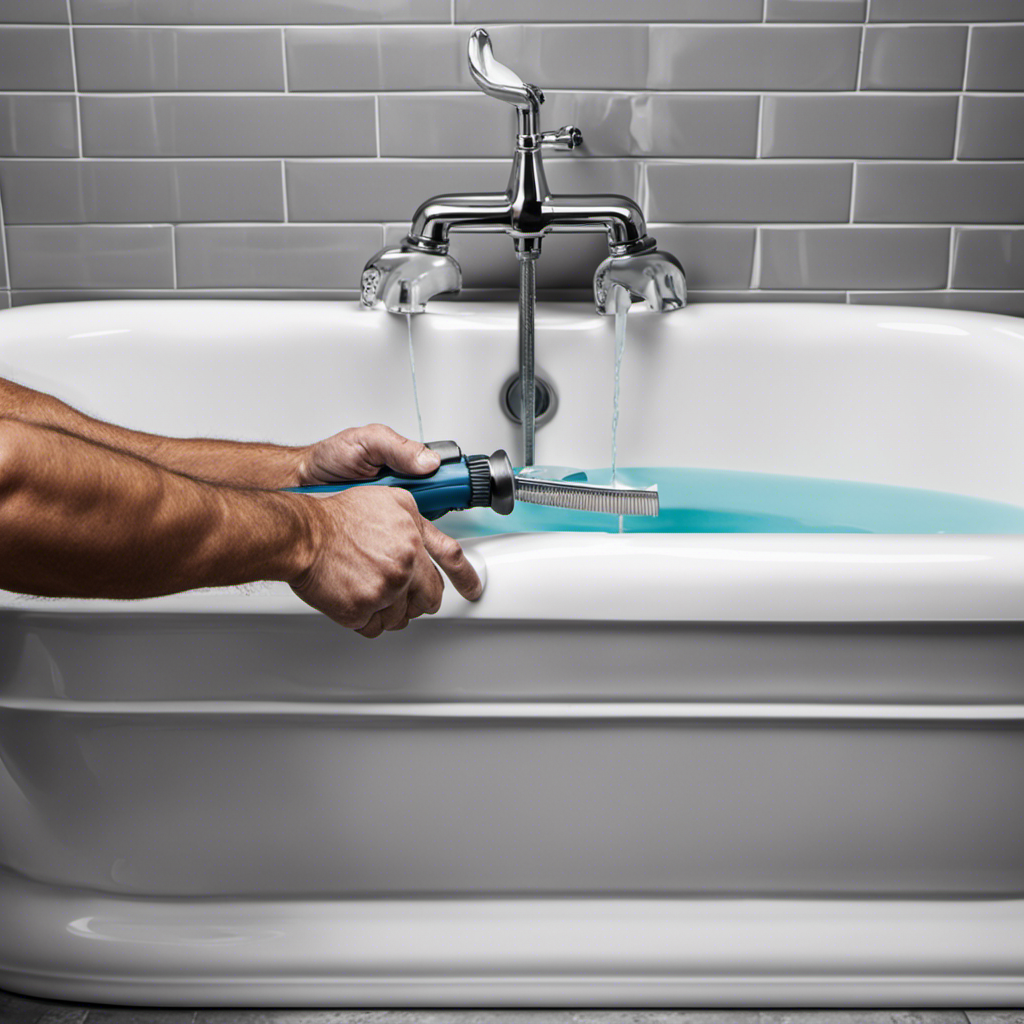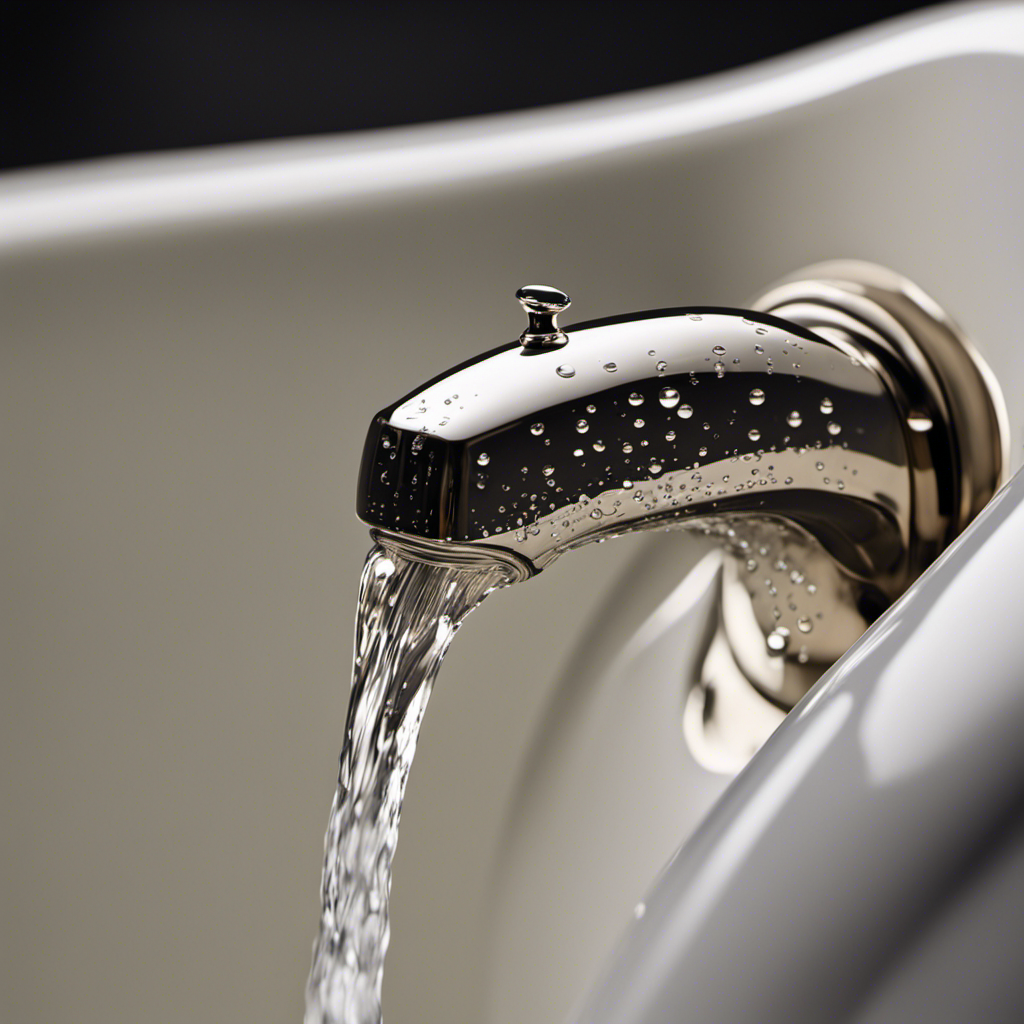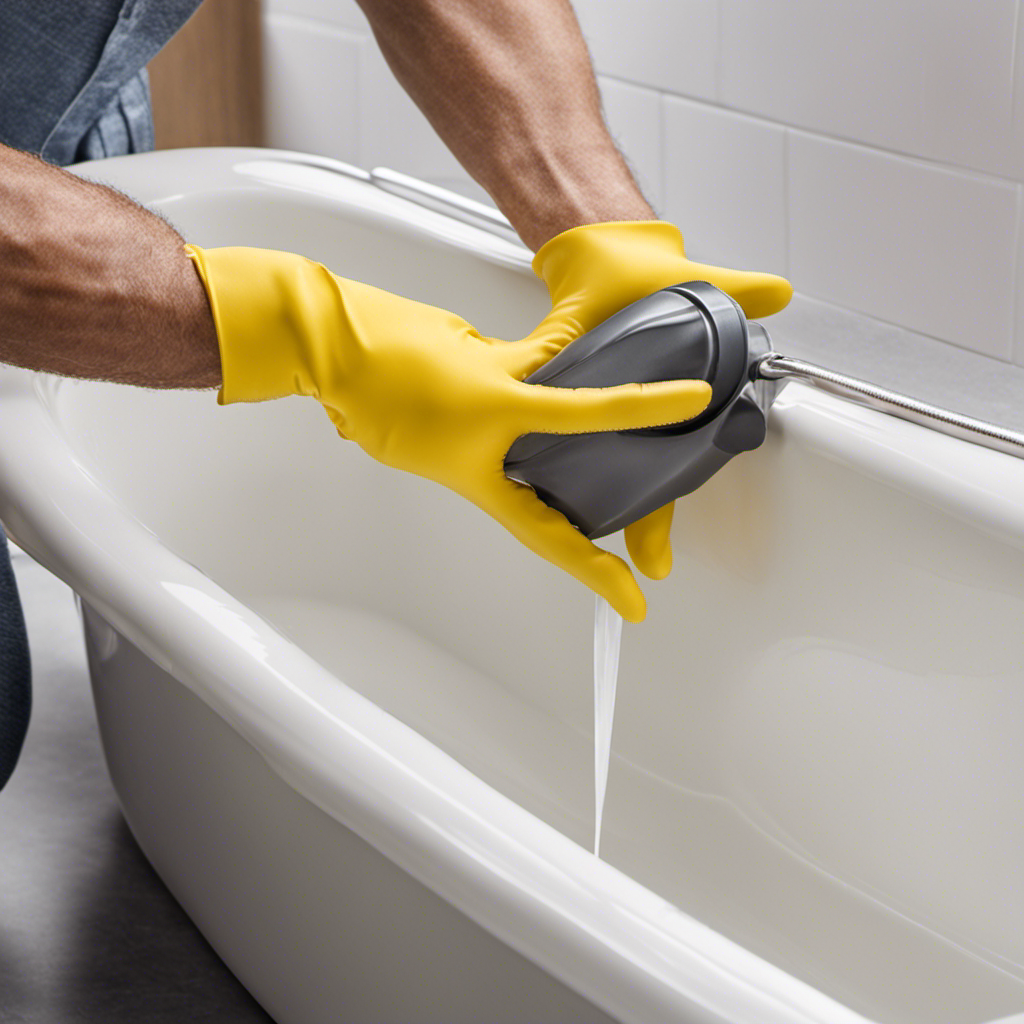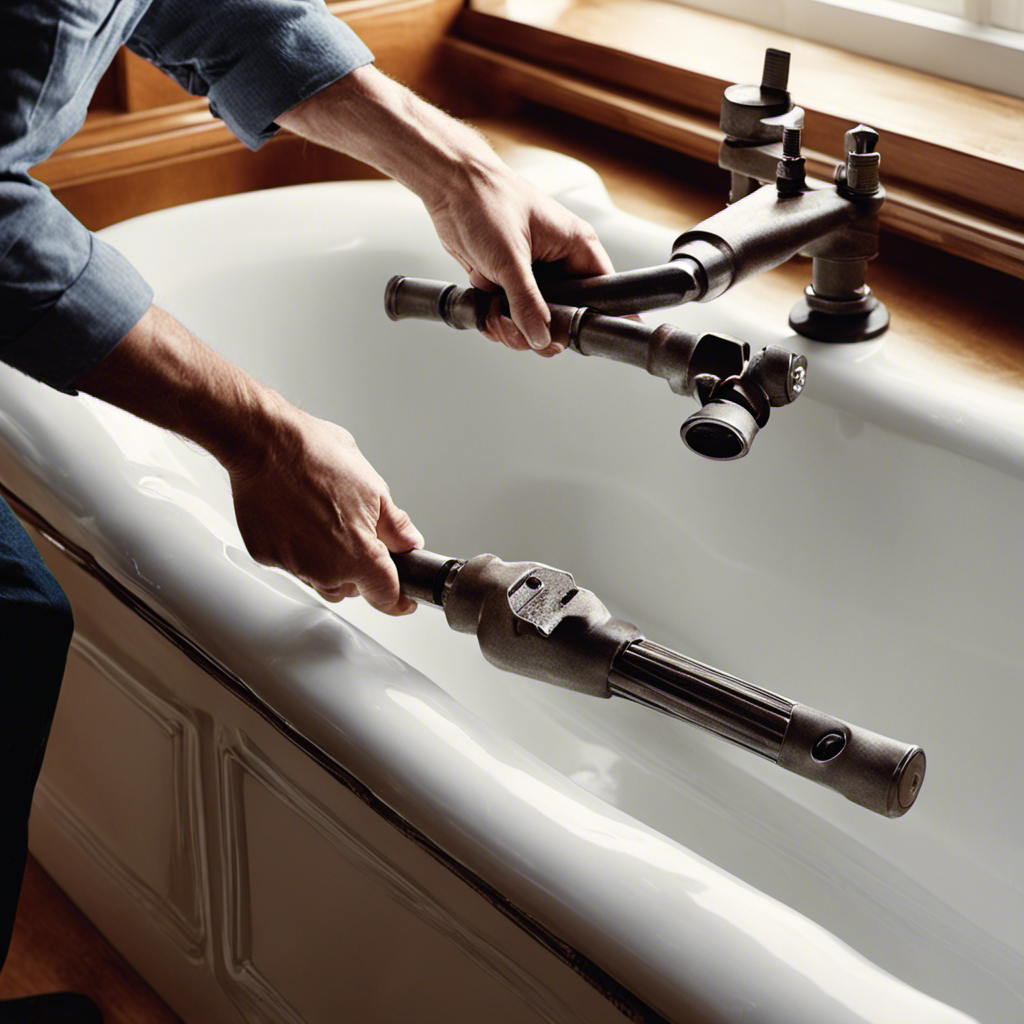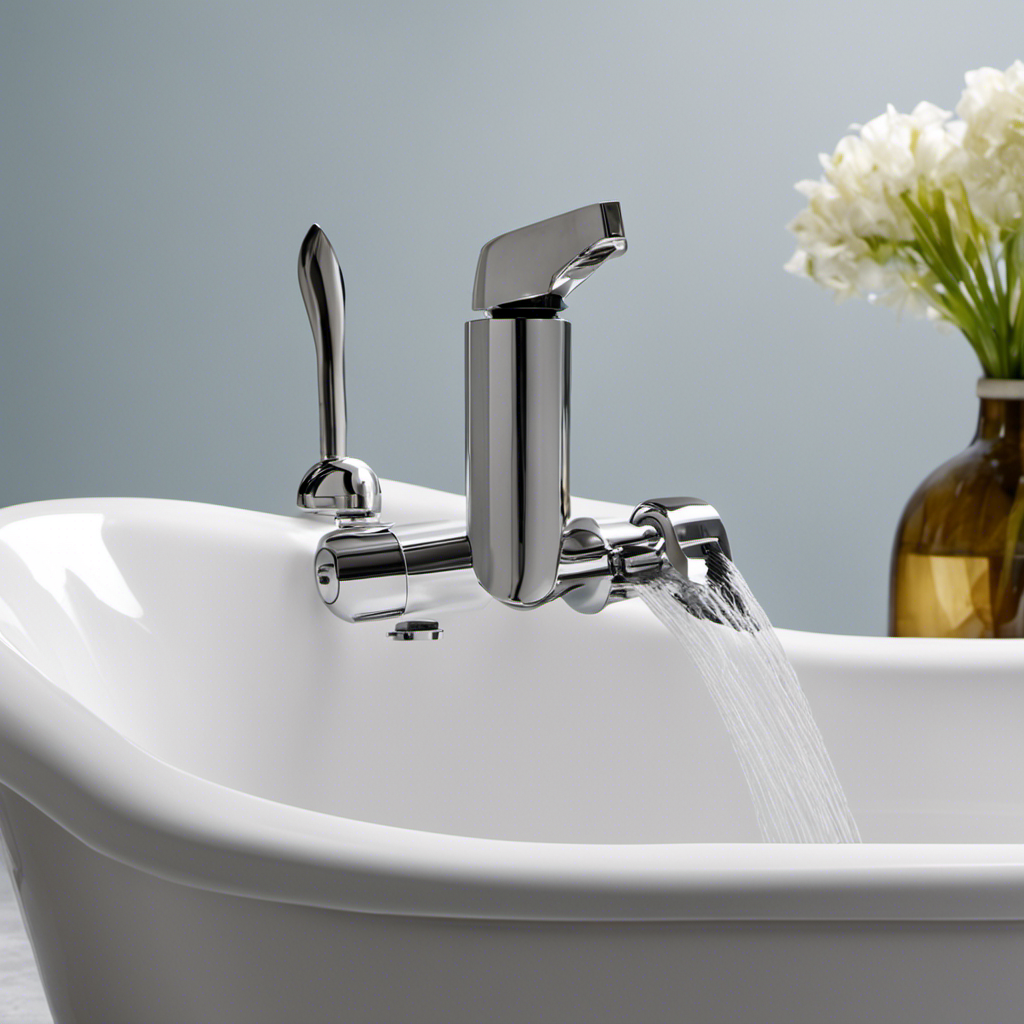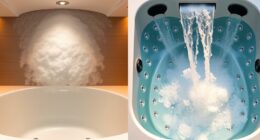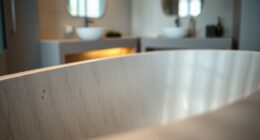Have you ever wondered how much it would cost to convert a bathtub to a shower? Well, I’m here to give you all the details.
In this article, I will break down the cost of materials, labor expenses, plumbing considerations, design options, and even the timeframe and project duration.
So if you’re thinking about making this change in your bathroom, keep reading to find out everything you need to know.
Key Takeaways
- The cost of converting a bathtub to a shower includes materials and labor expenses.
- Plumbing considerations such as waterproofing techniques and drainage solutions are crucial during the conversion process.
- Design options like space optimization, accessibility features, and material selection can enhance the functionality and aesthetics of the new shower.
- The timeframe and project duration for converting a bathtub to a shower involve various steps like removal of the existing bathtub, plumbing modifications, tiling, and customization.
Cost of Materials
You’ll need to budget for the cost of materials when converting your bathtub to a shower. This includes various components such as the shower pan, shower fixtures, tiles, adhesive, grout, and any additional accessories or features you may want to include.
The cost of installation will depend on the complexity of the project and whether you choose to hire a professional or tackle it as a DIY project.
It’s important to consider the maintenance requirements of the materials you choose. For instance, if you opt for high-quality tiles, they may require regular cleaning and sealing to keep them looking their best. Additionally, choosing durable and low-maintenance fixtures can help reduce future costs.
It’s essential to research and budget accordingly to ensure a successful and cost-effective conversion.
Labor Expenses
Labor expenses for bathroom remodeling can vary depending on the scope of the project and the specific contractor hired. Estimating the cost of labor is crucial for budget planning when converting a bathtub to a shower. Here are three factors to consider when estimating labor expenses:
-
Size of the project: The larger the bathroom and the more extensive the changes, the higher the labor costs. Demolishing existing fixtures, installing new plumbing, and tiling can all contribute to increased labor expenses.
-
Complexity of the design: If you have a specific design in mind that requires intricate tile patterns or custom features, it may require more time and skill, resulting in higher labor costs.
-
Contractor’s experience and reputation: Highly skilled and reputable contractors might charge more for their services, but their expertise can ensure a high-quality finish and potentially save you money in the long run.
Considering these factors will help you estimate labor expenses accurately and make informed decisions for your bathroom remodeling project.
Plumbing Considerations
When planning a bathroom remodeling project, it’s important to consider the complexity of the plumbing design and how it may impact labor costs. One key aspect to focus on is the waterproofing techniques and drainage solutions for your new shower. Proper waterproofing is essential to prevent water damage and mold growth in your bathroom. There are various techniques available such as applying a waterproof membrane, sealing joints and corners, and using waterproofing materials on walls and floors. Additionally, choosing the right drainage solution is crucial to ensure efficient water flow and prevent any potential issues. This may involve installing a new drain system or modifying the existing plumbing to accommodate the shower design. By carefully considering these plumbing factors, you can ensure a successful and long-lasting bathroom remodel.
| Waterproofing Techniques | Drainage Solutions |
|---|---|
| Waterproof membrane | New drain system |
| Sealing joints and corners | Modify existing plumbing |
| Waterproofing materials | Efficient water flow |
Design Options
To explore various design options for your bathroom remodel, consider different styles, materials, and color schemes that will create the aesthetic you desire. Here are three design elements to consider:
-
Space optimization: When redesigning your bathroom, it’s important to make the most of the available space. Consider installing a walk-in shower instead of a traditional bathtub to free up floor space and create a more open and spacious feel.
-
Accessibility features: Another important factor to consider is accessibility. Incorporating features such as grab bars, non-slip flooring, and a curbless shower entry can make your bathroom more accessible and safe for individuals with mobility challenges or those who plan to age in place.
-
Material selection: Choose materials that are both functional and visually appealing. Opt for durable and water-resistant materials like porcelain or ceramic tiles for the shower walls and floors. Additionally, consider using glass enclosures to create a sleek and modern look while maximizing natural light.
Timeframe and Project Duration
Consider scheduling your bathroom remodel during a time when you’ll have the flexibility to accommodate the project duration. When it comes to converting a bathtub to a shower, it’s important to understand the project timeline and the installation process involved. This will help you plan accordingly and avoid any unnecessary inconveniences.
Typically, the duration of a bathtub to shower conversion project can vary depending on the complexity of the job and the specific requirements of your bathroom. On average, the installation process can take anywhere from a few days to a couple of weeks. This includes the removal of the existing bathtub, plumbing modifications, installation of the shower base, tiling, and any additional customization you may choose.
To ensure a smooth and timely completion of your project, it is advisable to consult with a professional contractor. They can provide you with a more accurate estimate of the project timeline based on your specific circumstances. Planning ahead and allowing for some flexibility in your schedule will ensure a stress-free and successful bathroom remodel.
Conclusion
In conclusion, converting a bathtub to a shower can be a practical and transformative home improvement project. By considering the cost of materials and labor expenses, homeowners can make informed decisions about their bathroom renovation. Plumbing considerations and design options should also be taken into account. Additionally, the timeframe for completion should be considered.
With a knowledgeable and detail-oriented approach, this project can create a modern and functional shower space. The result will be a refreshing and rejuvenating experience.
So, why not take the plunge and turn your bathtub into a luxurious shower oasis?
